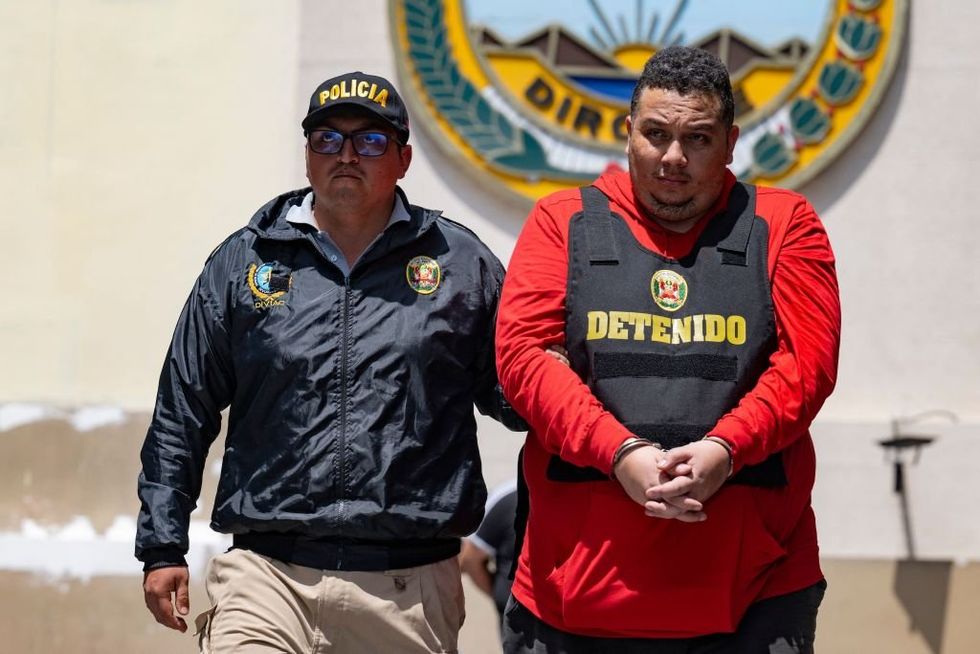Inside Tren de Aragua: The violent gang running riot across America
In recent times, a troubling new threat has emerged on the streets of major U.S. cities. Tren de Aragua, a Venezuelan gang whose reach and ruthlessness seem almost mythic in scope, is currently terrorizing Americans in cities like Dallas, New York, and Aurora, Colorado. Tren de Aragua has brought the horrors of one of the world's most dysfunctional states to the supposed superpower up north. However, the true horror of Tren de Aragua lies not just in its present-day criminal activities but in its origins. Prison beginnings Tren de Aragua (Spanish for "Aragua train") was born in the Tocorón prison in Venezuela's Aragua region; the gang may have taken its name from a local railway workers' union. Like most prison gangs, Tren de Aragua was born out of a need for self-preservation. Over time, the the gang's influence expanded as it grew, leveraging prison connections to gain power and developing more structured internal hierarchies. A series of violent clashes with rival gangs secured Tren de Aragua's dominance, setting the stage for its future criminal empire. The thirst for power, blood, and territory intensified. Once Tren de Aragua had cemented its presence within the Venezuelan prison system, its leaders began to strategize for a broader reach. They forged alliances with other criminal organizations and corrupt officials to secure and expand their operations. Initially involved in extortion and local drug distribution, the gang's activities soon expanded to other industries and countries, establishing a foothold in Colombia, Brazil, Bolivia, and beyond. With this new international influence, the gang diversified into human trafficking and arms smuggling, continuously adapting their methods to evade law enforcement and tighten their control over new regions. Crossing the border By the mid-2010s, Tren de Aragua had evolved from a local threat into a formidable transnational crime syndicate. Its operations had extended beyond South America, reaching into Central America and the Caribbean. The gang's activities grew increasingly sophisticated, involving targeted assassinations and expansive drug production and distribution networks that spanned multiple countries. This phenomenal growth was accompanied by a rise in violence and intimidation, ruthlessly deployed to advance the gang's interests. The ability to move resources and personnel across borders with relative ease enabled it to dominate local criminal market after criminal market, giving it a reach never before achieved by a Venezuelan gang. This reach eventually extend to the United States, where today, the gang seems to operate with impunity. In effect, Venezuelan immigrants across Florida and other states who fled their home country are witnessing the very criminal activities they worked so hard to escape. Tren de Aragua has brought the horrors of one of the world's most dysfunctional states to the supposed superpower up north. America as a 'hunting ground' While Tren de Aragua represents a significant and terrifying threat on its own, it is far from the only dangerous gang operating within the United States. In fact, according to the FBI, there are at least another 32,999 violent street, motorcycle, and prison gangs active across the land. One of the better known is MS-13, a notorious organization that casts a long, dark shadow over American cities. Known less commonly as Mara Salvatrucha, MS-13 originated in the 1980s among Salvadoran immigrants in Los Angeles. It has since grown into one of the most feared gangs in America with a reputation for extreme violence and sadistic levels of savagery. In recent years, Washington, D.C., has seen a dramatic increase in gang-related violence, with MS-13 playing a significant role. The city has, disturbingly, been described as a "hunting ground" for the gang, reflecting the pervasive and violent nature of its activities. In Texas, its members have been known to abduct, drug, and rape little girls. Time to choose As the United States approaches what could be one of its most consequential elections since its founding, the safety and security of every American is on the ballot. The relentless rise of gangs like Tren de Aragua and MS-13 underscores that national security is not merely a political slogan — it's an essential duty of government and a fundamental right for every law-abiding citizen. This November, voters concerned with this escalating, imported crime must decide which party possesses the determination and capability to tackle these existential threats. The choice seems clear: Support those who emphasize stringent border enforcement and the protection of American lives or those who trivialize and dismiss such concerns. Only one party has demonstrated the commitment and readiness to confront this ever-worsening crisis — and it is not the party of Kamala Harris.


In recent times, a troubling new threat has emerged on the streets of major U.S. cities.
Tren de Aragua, a Venezuelan gang whose reach and ruthlessness seem almost mythic in scope, is currently terrorizing Americans in cities like Dallas, New York, and Aurora, Colorado.
Tren de Aragua has brought the horrors of one of the world's most dysfunctional states to the supposed superpower up north.
However, the true horror of Tren de Aragua lies not just in its present-day criminal activities but in its origins.
Prison beginnings
Tren de Aragua (Spanish for "Aragua train") was born in the Tocorón prison in Venezuela's Aragua region; the gang may have taken its name from a local railway workers' union.
Like most prison gangs, Tren de Aragua was born out of a need for self-preservation. Over time, the the gang's influence expanded as it grew, leveraging prison connections to gain power and developing more structured internal hierarchies. A series of violent clashes with rival gangs secured Tren de Aragua's dominance, setting the stage for its future criminal empire.
The thirst for power, blood, and territory intensified.
Once Tren de Aragua had cemented its presence within the Venezuelan prison system, its leaders began to strategize for a broader reach. They forged alliances with other criminal organizations and corrupt officials to secure and expand their operations.
Initially involved in extortion and local drug distribution, the gang's activities soon expanded to other industries and countries, establishing a foothold in Colombia, Brazil, Bolivia, and beyond. With this new international influence, the gang diversified into human trafficking and arms smuggling, continuously adapting their methods to evade law enforcement and tighten their control over new regions.
Crossing the border
By the mid-2010s, Tren de Aragua had evolved from a local threat into a formidable transnational crime syndicate. Its operations had extended beyond South America, reaching into Central America and the Caribbean. The gang's activities grew increasingly sophisticated, involving targeted assassinations and expansive drug production and distribution networks that spanned multiple countries.
This phenomenal growth was accompanied by a rise in violence and intimidation, ruthlessly deployed to advance the gang's interests.
The ability to move resources and personnel across borders with relative ease enabled it to dominate local criminal market after criminal market, giving it a reach never before achieved by a Venezuelan gang.
This reach eventually extend to the United States, where today, the gang seems to operate with impunity.
In effect, Venezuelan immigrants across Florida and other states who fled their home country are witnessing the very criminal activities they worked so hard to escape. Tren de Aragua has brought the horrors of one of the world's most dysfunctional states to the supposed superpower up north.
America as a 'hunting ground'
While Tren de Aragua represents a significant and terrifying threat on its own, it is far from the only dangerous gang operating within the United States. In fact, according to the FBI, there are at least another 32,999 violent street, motorcycle, and prison gangs active across the land.
One of the better known is MS-13, a notorious organization that casts a long, dark shadow over American cities. Known less commonly as Mara Salvatrucha, MS-13 originated in the 1980s among Salvadoran immigrants in Los Angeles. It has since grown into one of the most feared gangs in America with a reputation for extreme violence and sadistic levels of savagery.
In recent years, Washington, D.C., has seen a dramatic increase in gang-related violence, with MS-13 playing a significant role. The city has, disturbingly, been described as a "hunting ground" for the gang, reflecting the pervasive and violent nature of its activities. In Texas, its members have been known to abduct, drug, and rape little girls.
Time to choose
As the United States approaches what could be one of its most consequential elections since its founding, the safety and security of every American is on the ballot. The relentless rise of gangs like Tren de Aragua and MS-13 underscores that national security is not merely a political slogan — it's an essential duty of government and a fundamental right for every law-abiding citizen.
This November, voters concerned with this escalating, imported crime must decide which party possesses the determination and capability to tackle these existential threats.
The choice seems clear: Support those who emphasize stringent border enforcement and the protection of American lives or those who trivialize and dismiss such concerns. Only one party has demonstrated the commitment and readiness to confront this ever-worsening crisis — and it is not the party of Kamala Harris.
Originally Published at Daily Wire, World Net Daily, or The Blaze
What's Your Reaction?
































































































